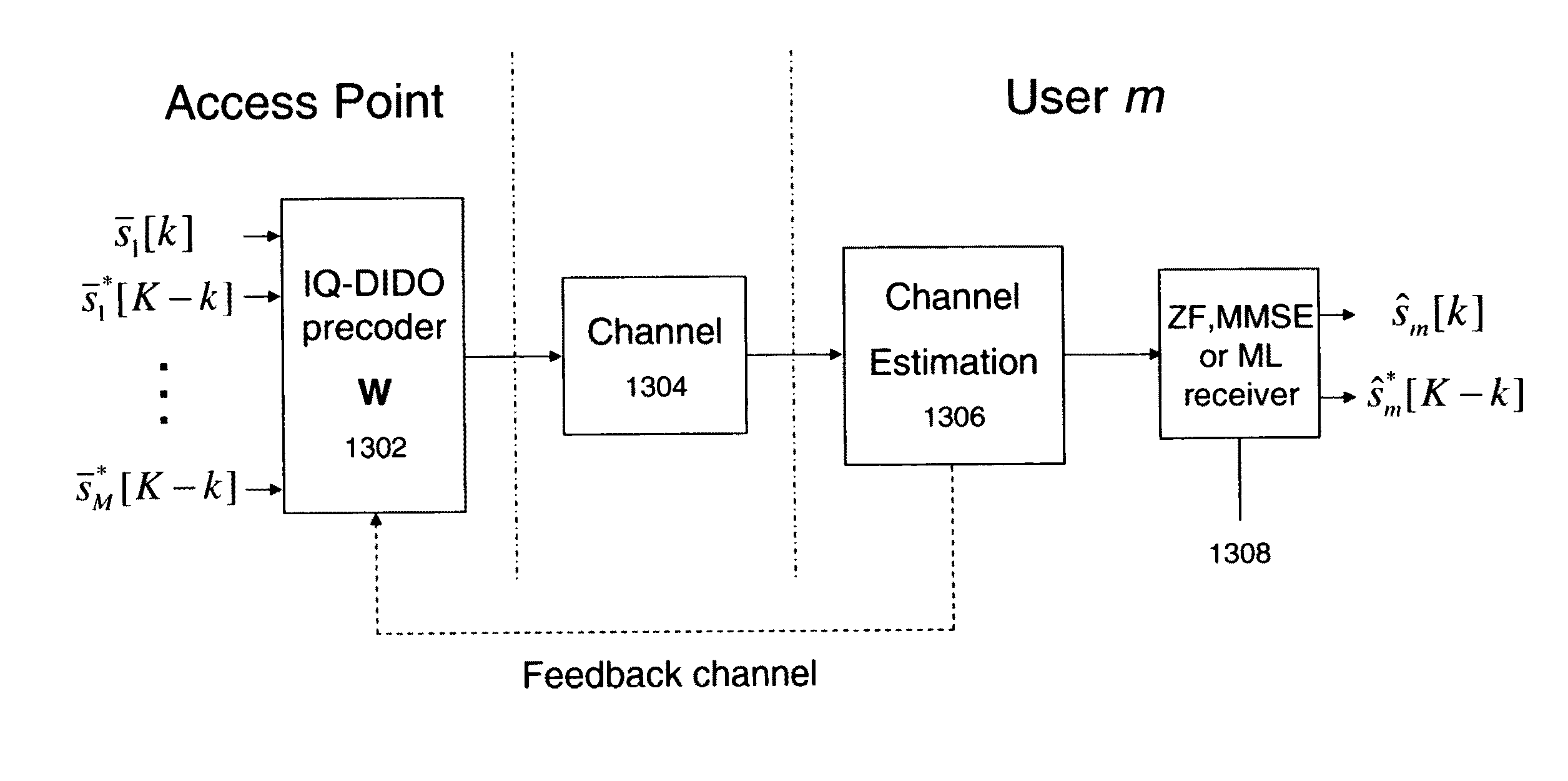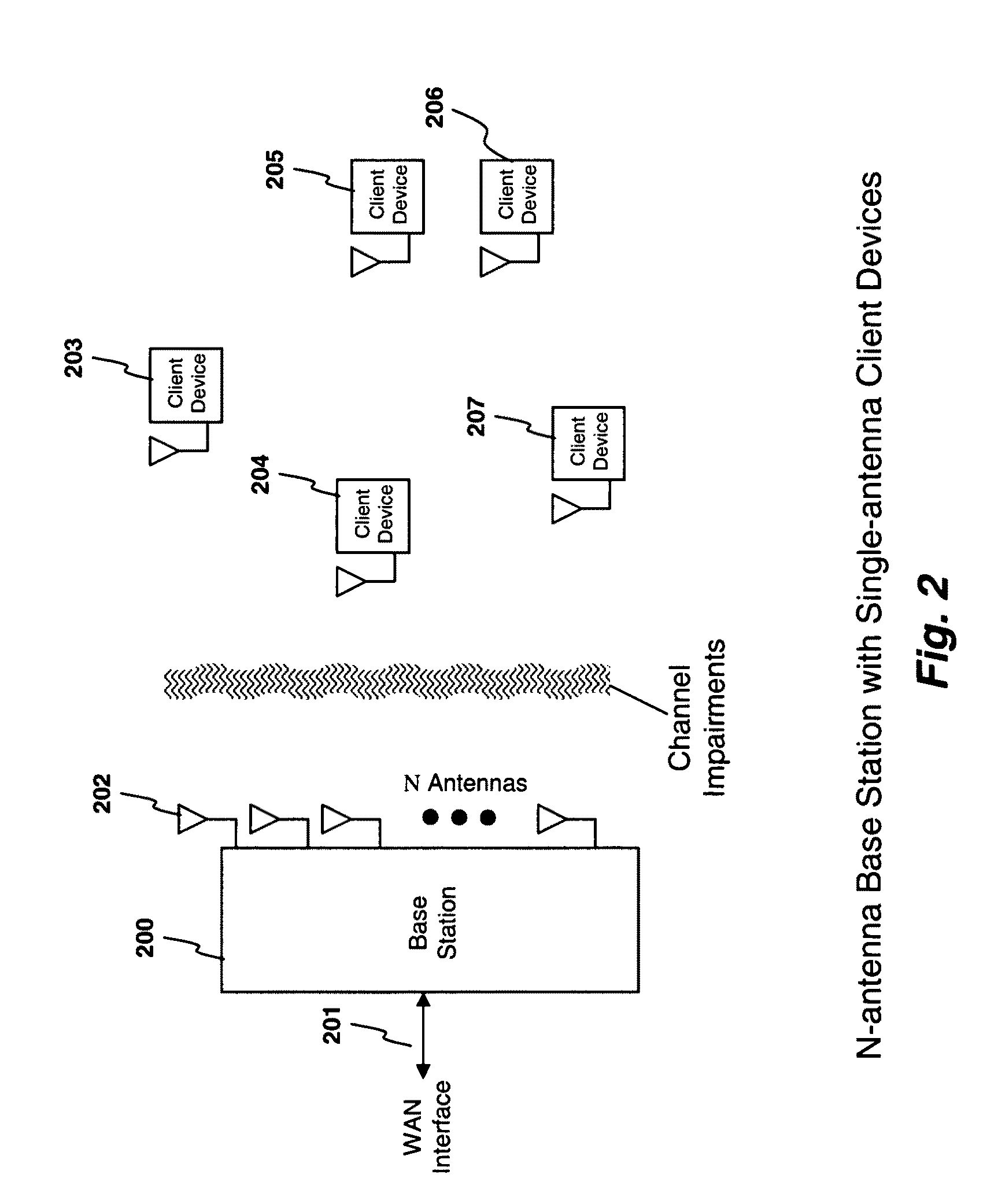System and method for distributed input distributed output wireless communications
a wireless communication and distributed input technology, applied in the field of communication systems, can solve the problems of reducing affecting the performance of the mimo system, and rapidly deteriorating efficiency
- Summary
- Abstract
- Description
- Claims
- Application Information
AI Technical Summary
Benefits of technology
Problems solved by technology
Method used
Image
Examples
Embodiment Construction
[0089]In the following description, for the purposes of explanation, numerous specific details are set forth in order to provide a thorough understanding of the present invention. It will be apparent, however, to one skilled in the art that the present invention may be practiced without some of these specific details. In other instances, well-known structures and devices are shown in block diagram form to avoid obscuring the underlying principles of the invention.
[0090]FIG. 1 shows a prior art MIMO system with transmit antennas 104 and receive antennas 105. Such a system can achieve up to 3× the throughput that would normally be achievable in the available channel. There are a number of different approaches in which to implement the details of such a MIMO system which are described in published literature on the subject, and the following explanation describes one such approach.
[0091]Before data is transmitted in the MIMO system of FIG. 1, the channel is “characterized.” This is acc...
PUM
 Login to View More
Login to View More Abstract
Description
Claims
Application Information
 Login to View More
Login to View More - R&D
- Intellectual Property
- Life Sciences
- Materials
- Tech Scout
- Unparalleled Data Quality
- Higher Quality Content
- 60% Fewer Hallucinations
Browse by: Latest US Patents, China's latest patents, Technical Efficacy Thesaurus, Application Domain, Technology Topic, Popular Technical Reports.
© 2025 PatSnap. All rights reserved.Legal|Privacy policy|Modern Slavery Act Transparency Statement|Sitemap|About US| Contact US: help@patsnap.com



